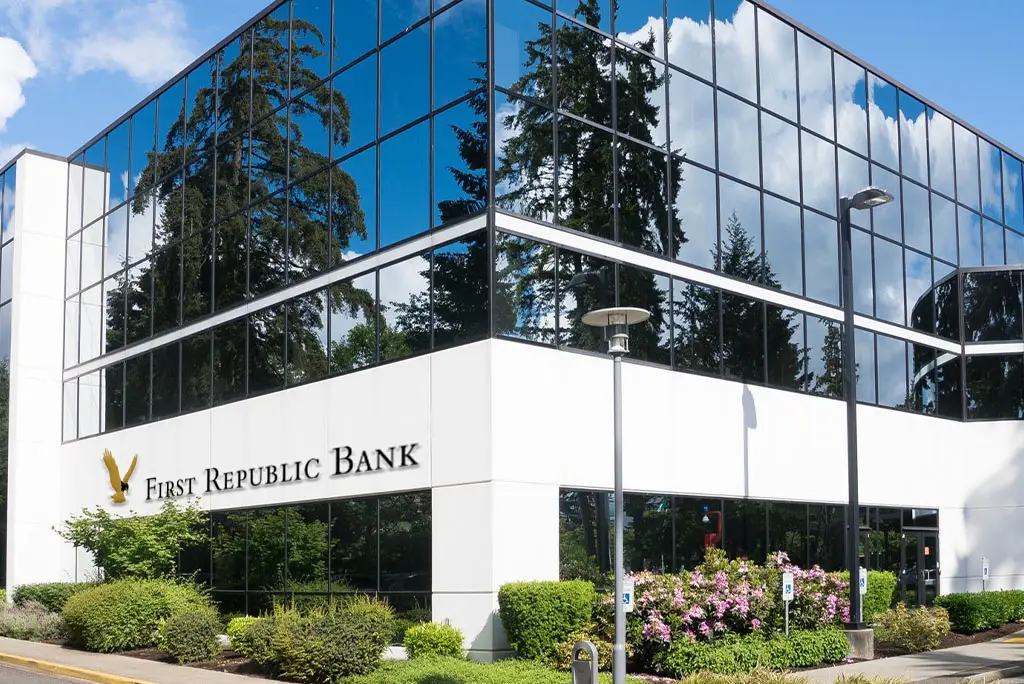The First Republic lost $72 billion in deposits during the 1st quarter. Customers had pulled their money from the institution after the March failure of SVB. SVB failure was an event that triggered panic throughout the banking system. It has caused depositors to look for the perceived safety of large financial institutions.
What really happened
The First Republic Bank had tried to face the turmoil. It did so by borrowing from the Fed or Federal Reserve. It received $30 billion in uninsured deposits. This was from the eleven largest banks in the country. Despite this, the total deposit balance of First Republic still was low by 41 percent during the quarter to dollars 104.4 billion. This was according to the bank’s 1st-quarter earnings report released on Monday. Without the dollars 30 billion that was infusion from the 11 large banks, its net outflow could have been estimated at $102 billion.
This disclosure resulted in the spiraling of stocks of First Republic in after-hours trading. It went down 21%. Its stock has dropped above 85% since January month. On Monday, the bank closed the trading day up 12 percent.
Analyzing First Republic’s Failure
Jason Benowitz, CI Roosevelt Associate Partner, told Yahoo Finance that the future of this company is uncertain. He also added that the bank lost much in deposits. They have to replace that funding in some way. As a result, they are doing it by borrowing.
The borrowing will weigh on the bank’s profitability in the reported quarter.
First Republic said on Monday that outflows had begun to stabilize. This was the week of March 27, and the deposit activity remained stable through April 21. Its balance till Friday was dollars 102.7 billion. This was a drop of 1.7 percent since the end of the quarter.
The bank also said on Monday that it is to take steps to increase the number of deposits that the Federal Deposit Insurance Corporation insures. It shall trim its borrowings and decrease loan balances to correspond with reduced dependence on uninsured depositors.
Michael Roffler, First Republic CEO, said there has been uncertainty over the past 2 months, and average account sizes have decreased. But, they have retained over 97 percent of client relationships with them at the start of the 1st quarter. Several other regional banks similarly reported deposit outflows during the 1st quarter. This was true, though First Republic’s drop was severe. Credit Suisse also said on Monday that its customers withdrew about $ 75 billion in deposits during the quarter.
First Republic, similar to many regional banks, is trying to adapt to a period of high interest rates. This is as deposit costs increase across the industry and the loan margins shrink. Its 1st-quarter earnings of $ 269 million were down 30 percent from the 4th quarter and 33 percent from the year-earlier period.
The bank’s net interest income dropped 21 percent from the 4th quarter and 19 percent from the 1st quarter of 2022.
The bank started borrowing money from the Fed, the Federal Home Loan Bank, and JPMorgan Chase. Borrowings peaked on 15th March at $138.1 billion. At that point, the bank had dollars 34 billion in cash. It was the day before the bank received a $ 30 billion deposit infusion from eleven other banks.
So, the support from the rival banks allowed the First Republic to reduce its short-term borrowings. And, by April 21, its total borrowings decreased to dollars 104 billion.
Since mid-March, First Republic has been exploring multiple options which could restore stability. This included raising capital or a sale. On Monday, the bank said it will pursue options to expedite its progress and reinforce its capital position.

